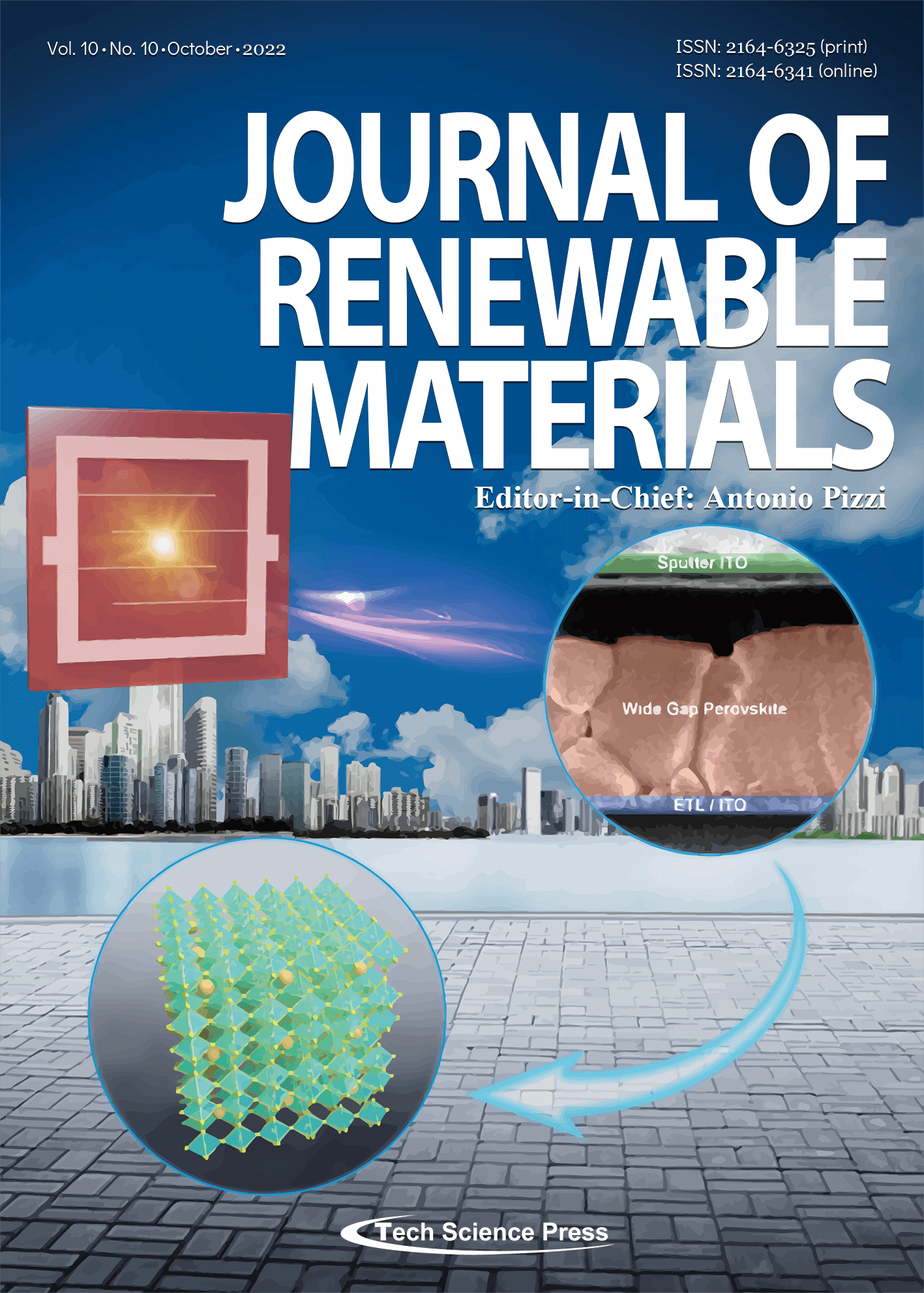Sputtering under Mild Heating Enables High-Quality ITO for Efficient Semi-Transparent Perovskite Solar Cells
Yongbin Jin1,#, Zheng Fang1,2,#, Liu Yang1, Kaikai Liu1, Mingliang Li1, Yaping Zhao1, Yujie Luo1, Huiping Feng1, Bingru Deng1, Chengbo Tian1, Changcai Cui2, Liqiang Xie1,*, Xipeng Xu2,*, Zhanhua Wei1
Journal of Renewable Materials, Vol.10, No.10, pp. 2509-2518, 2022, DOI:10.32604/jrm.2022.021400
- 08 June 2022
(This article belongs to the Special Issue: Perovskite Solar Cells)
Abstract Semi-transparent perovskite solar cells (ST-PSCs) are promising in building-integrated photovoltaics (BIPVs) and tandem solar cells (TSCs). One of the keys to fabricate high-performance ST-PSCs is depositing efficient transparent electrodes. Indium tin oxide (ITO) is an excellent transparent conductive oxide with good light transmittance and high conductivity. However, the high sheet resistance of ITO sputtered at room temperature leads to the low fill factor (FF) and poor power conversion efficiency (PCE) of the ST-PSCs. Here, we study the effect of the sputtering temperature on the properties of ITO and the performance of ST-PSCs. We find that More >
Graphic Abstract
